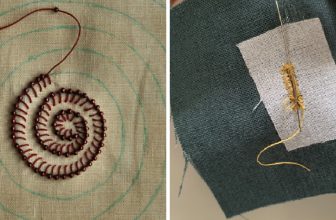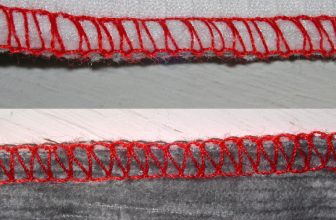How to Do Stem Stitch
Are you a lover of embroidery? Do you want to level up your embroidery skills and learn something new? If so, let me introduce you to one of the timeless embroidery stitches – the stem stitch.
Stem stitch, when executed correctly, creates a beautiful curved line with a rope-like texture that can be used in several embroidery patterns. This stitch is easy to learn, and with consistent practice, you can master it in no time. In this blog post, we will go through easy steps on how to do stem stitch like a pro.
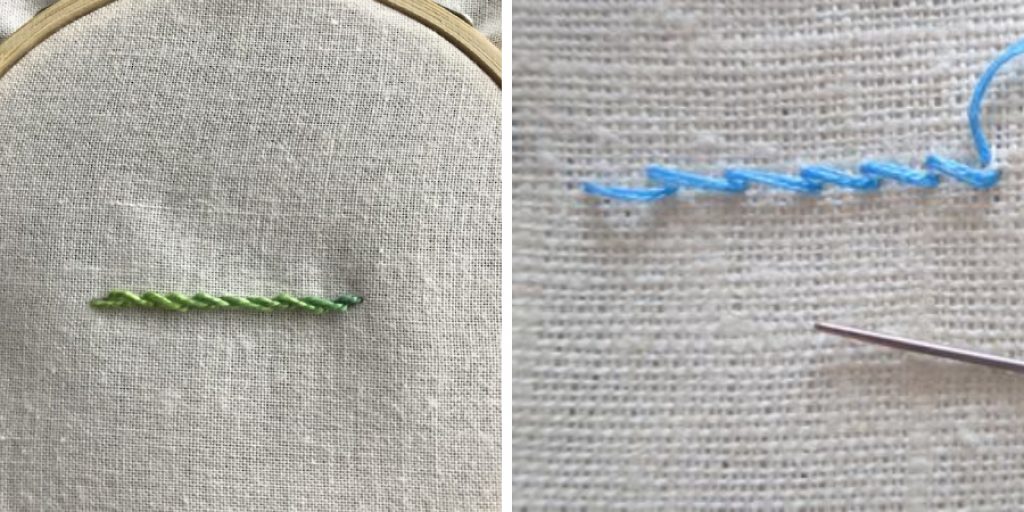
Can You Do a Stem Stitch?
The art of embroidery has been around for centuries and is still beloved by many today. One of the most popular stitches is the stem stitch, known for its beautiful texture and ability to create curvy lines with ease.
If you’re new to the stitch, don’t be intimidated – with a little practice, you can master it quickly. Not only is the stem stitch perfect for creating floral designs and lettering, but it’s also versatile enough to be used in various other projects. So grab your needle and thread and prepare to add a new skill to your embroidery repertoire!
Why Should You Do Stem Stitch?
If you want to step up your embroidery game, the stem stitch is a great stitch to add to your repertoire. This simple yet versatile stitch can outline, fill in shapes, or add texture to your work. The stem stitch gets its name from its traditional use in embroidering plant stems and vines, but it can also be used to create other linear designs.
What sets the stem stitch apart from other embroidery stitches is its rope-like appearance, which adds depth and dimension to your work. So why should you do a stem stitch? Because it’s a great way to add style and character to your embroidery projects, whether you’re a seasoned pro or just starting.
Mastering the Art of Embroidery: How to Do Stem Stitch
Step 1: Choose Your Thread
First, as with all embroidery, you need to choose your thread. Embroidery floss or stranded cotton is ideal for most embroidery projects. It comes in six strands; needs only two to three strands for stem stitch. Once you select your thread for the embroidery project, use a needle that matches the floss’ thickness and fabric type that you’ll be embroidering onto.
Step 2: Thread Your Needle
To thread the needle, separate two to three strands from the length of the thread and pull them together. Thread your needle until it is about halfway through the looped ends of the thread. Then, hold both sides of the thread with one hand while using your other hand to gently slide the needle up or down so that all strands feed through the eye of the needle.
Step 3: Pull Thread Through Fabric

Hold the thread at the back of your fabric, then pull it up towards you with your needle at a 45-degree angle until it’s just above where you want to begin stitching. This stitch usually begins three-quarters of an inch from where you plan on ending, so take this into consideration when you choose your starting point.
Step 4: Make a Small Stitch
A Stem stitch is created by making a small stitch to the left of the thread, then looping it around and bringing it up from below on the right side of the thread. This creates an ‘S’ shape along the line that will be repeated as you work.
Step 5: Repeat the Small Stitch
Continue making small, even stitches along the line, looping them around and bringing them up from below in the same manner as you did for your first stitch. Make sure to keep your stitches even and consistent; this will help create a neat-looking stem stitch.
Step 6: End Your Thread
When you reach the end of your line, make one more stitch and bring the needle up from below, but don’t loop it around as you did for the previous stitches. Instead, take a few small backstitches so that your thread is secure at the end.
Step 7: Finish Your Stem Stitch
Once you’ve finished stitching, tie off the thread at the back of the fabric and snip off any excess thread. Now your stem stitch is complete! You can use this stitch to create intricate designs and patterns in any embroidery or needlework. With a little practice, you’ll create beautiful pieces in no time!
That’s it! You’ve now learned how to do stem stitch. It is a great embroidery technique that you can use for any project! Give it a try and enjoy beautiful embroidery creations. Happy stitching!
5 Considerations Things When You Need to Do Stem Stitch

1. The first thing you need to consider when doing stem stitches is the type of fabric you will be using. Stem stitch works best on fabrics that are not too thick or thin. Fabrics that are too thick may be difficult to penetrate with the needle, while fabrics that are too thin may tear easily.
2. The second thing you must consider is the thread you will use. Threads that are too thick may cause the fabric to pucker, while threads that are too thin may break easily. It is best to use a medium-weight thread for the stem stitch.
3. The third thing you need to consider is the needle you will be using. Needles that are too small may break easily, while needles that are too large may be difficult to maneuver. It is best to use a medium-sized needle for stem stitches.
4. The fourth thing you need to consider is the length of the stitches. Stitches that are too long may cause the fabric to pucker, while stitches that are too short may make the stitching look uneven. It is best to use stitches about 1/4 inch long for stem stitches.
5. The fifth and final thing you need to consider is the tension of the stitches. Stitches that are too loose may cause the fabric to pucker, while stitches that are too tight may make the stitching look uneven. It is best to use moderate tension when doing stem stitches.
Follow these considerations, and you can be sure to have a successful stem stitch project! Good luck!
5 Benefits of Do Stem Stitch
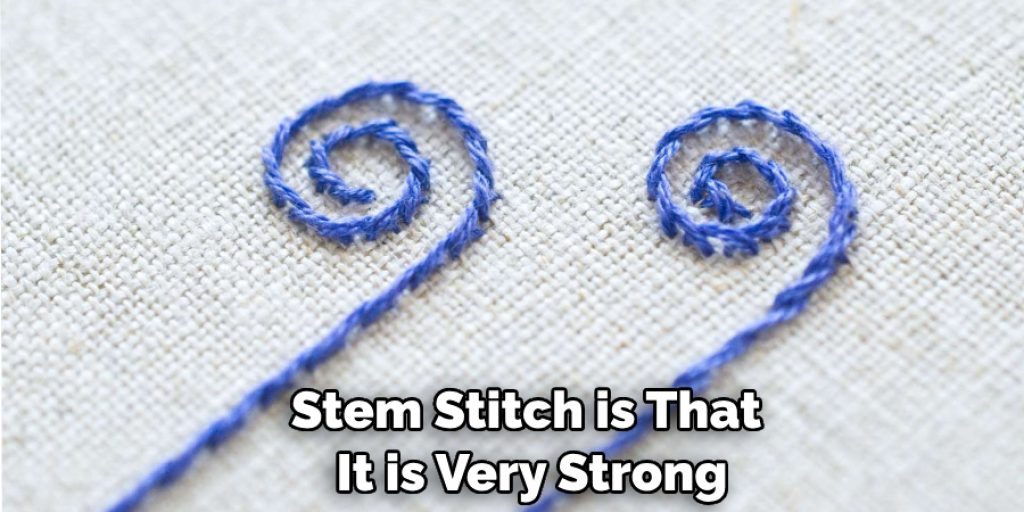
1. The first benefit of the stem stitch is that it is very versatile. It can create straight lines, curved lines, and even circles. This makes it a great stitch for a variety of different projects.
2. The second benefit of the stem stitch is that it is very strong. This means it can be used for projects with a lot of wear and tear, such as clothing or bags.
3. The third benefit of the stem stitch is that it is a relatively easy to learn. Even if you are a beginner, you should be able to master this stitch with a little practice.
4. The fourth benefit of the stem stitch is that it creates a nice, textured look. This can add interest to any project, whether a simple piece of fabric or an elaborate embroidery project.
5. The fifth benefit of the stem stitch is that it is relatively quick. This means you can finish your project promptly without spending hours on it. These benefits make the stem stitch a great choice for various projects. So why not give it a try?
Some Common Mistakes People Make When Trying to Do Stem Stitch
Regarding embroidery, stem stitching is popular for adding detail and texture to designs. However, even experienced stitchers can make mistakes that result in less-than-stellar results. One of the most common mistakes is pulling the thread too tightly, which can cause the stitches to pucker and create an uneven surface.
Another mistake is not using the correct tension, making the stitches appear loose and loopy. It’s also important to ensure you’re stitching in the same direction, otherwise, your stitches may appear slanted or uneven. Avoiding these common mistakes will ensure that your stem stitching is neat and even and adds the perfect finishing touch to your embroidery project.
Can I Create a More Ornate Look with The Basic Stem Stitch Technique?
If you want to add some elegance and sophistication to your embroidery, you might wonder if the basic stem stitch technique is up to the task. The answer is a resounding yes! While the stem stitch is a simple and versatile technique, it can be easily modified to create a wide range of ornate and intricate designs.
By varying the length and angle of your stitches, you can create flowing curves, graceful loops, and intricate patterns that will give your embroidery a level of sophistication and beauty that will surely impress you. So don’t be afraid to experiment with this basic stitch – with a little creativity and practice, you’ll be amazed at the elaborate and stunning designs you can create!
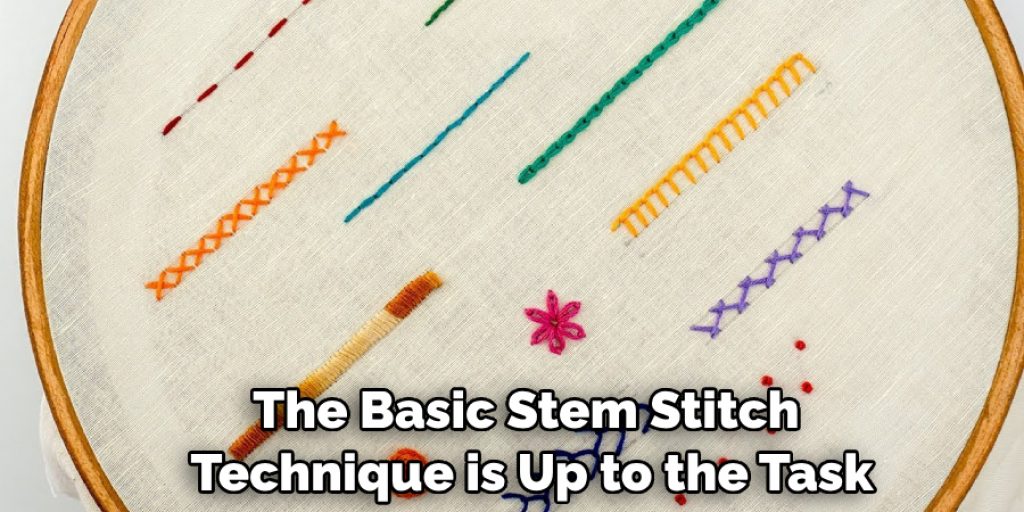
Conclusion
In conclusion, a stem stitch is one of the fundamental embroidery stitches every enthusiast should master. The stitch technique can be used in designing leaves, stems, and flower petals that give your embroidered fabric the aesthetic curvature that makes it unique. Follow these simple steps, practice with patience and consistency, and with time, you will become a pro. Have fun discovering the endless possibilities that stem stitch has to offer. Thanks for reading our post about how to do stem stitch.

